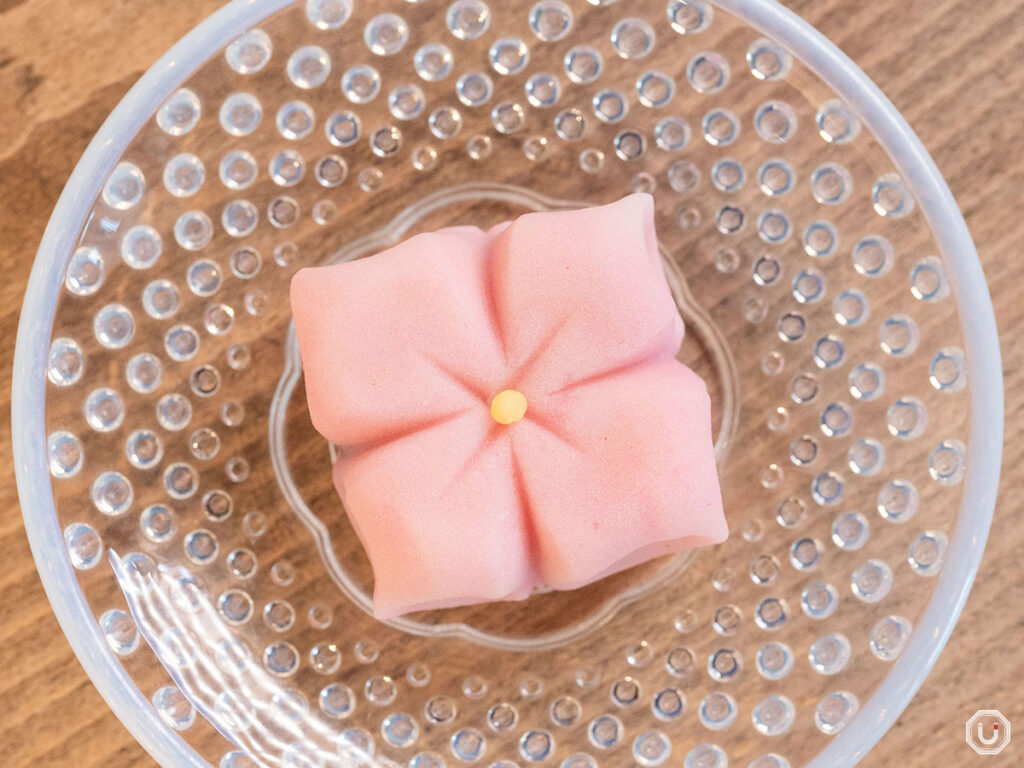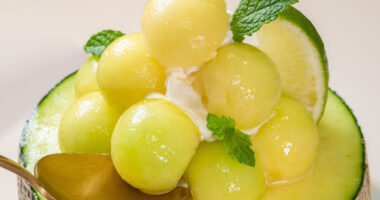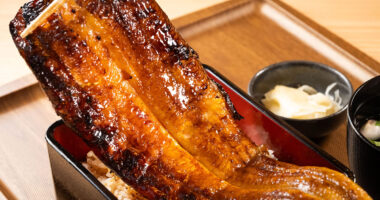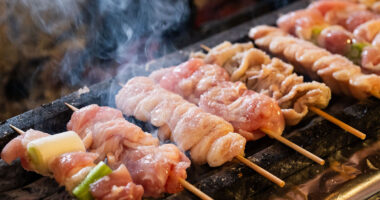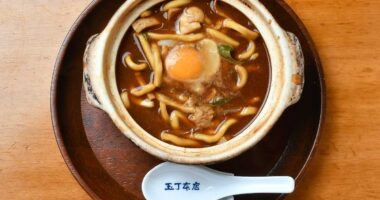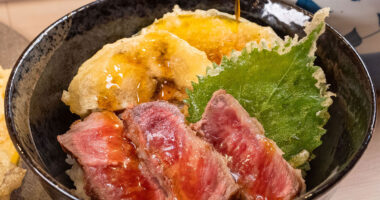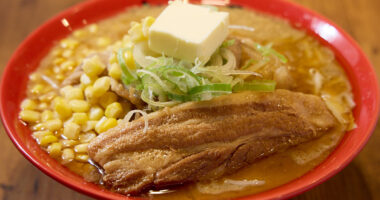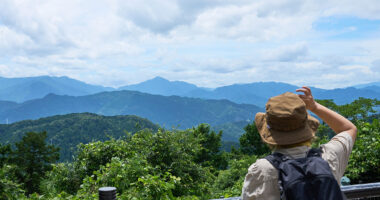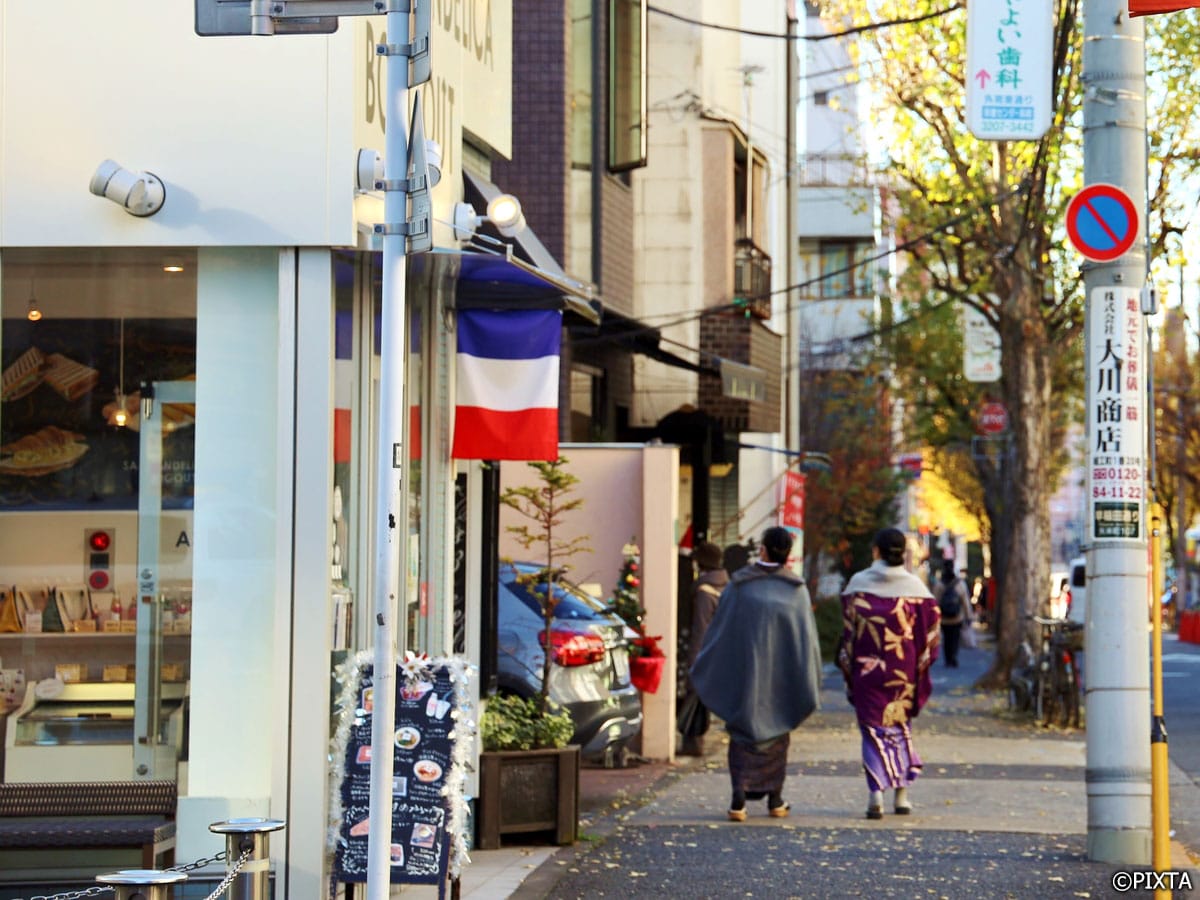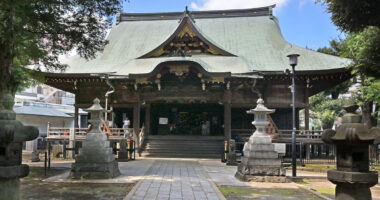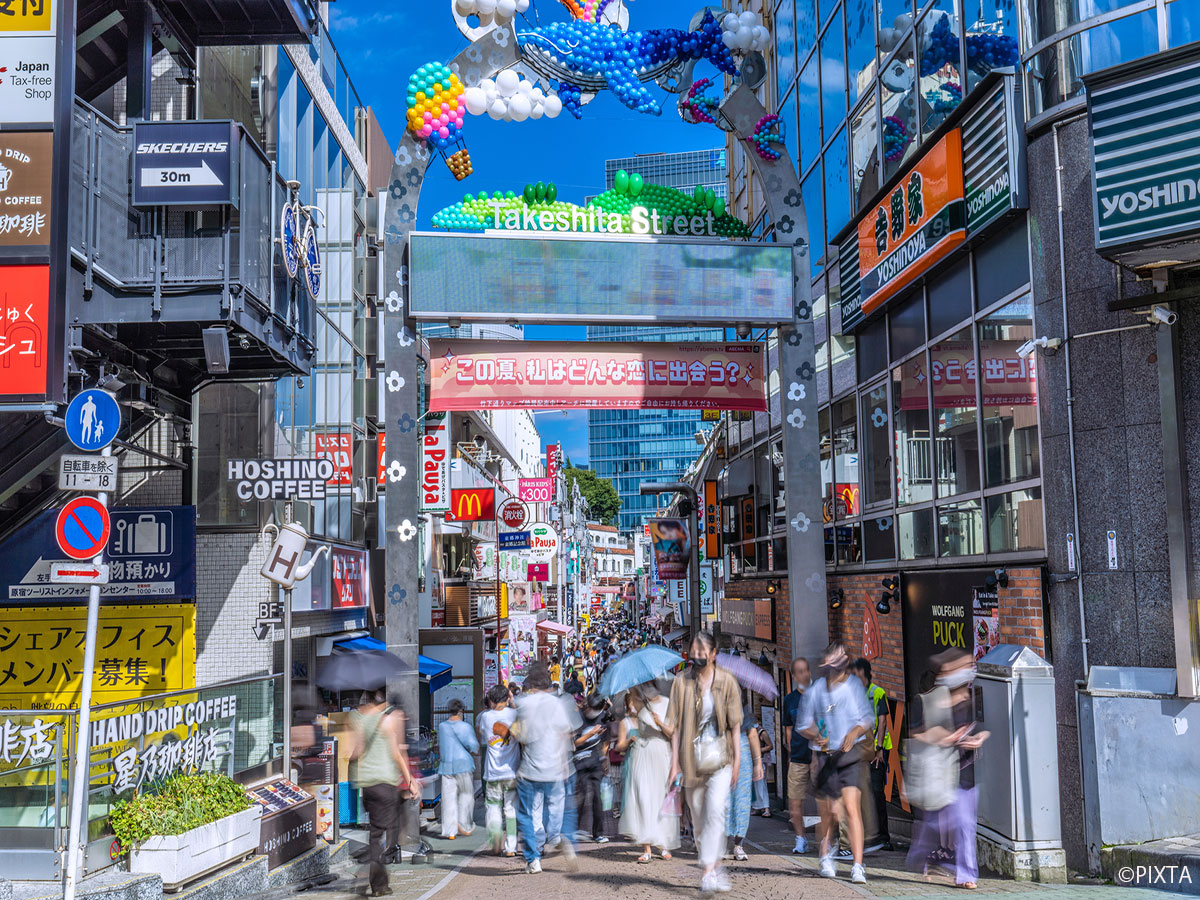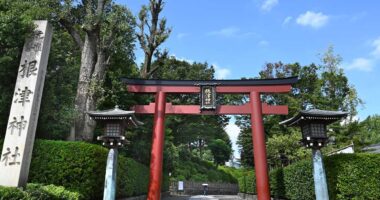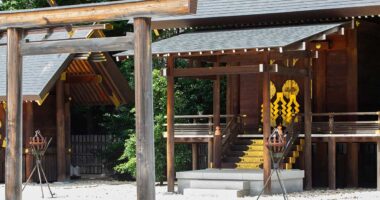Wagashi, traditional Japanese sweets, embody the country’s singular aesthetic sensibilities.
Their forms and colors express seasonal scenery and even poetic sentiment, displaying a delicate artistry akin to fine crafts. At the heart of wagashi lies a deep appreciation for nature, the seasons, and the spirit of hospitality—core elements of Japanese culture.
Wagashi are more than just confections; they are symbols of Japan’s cultural identity.
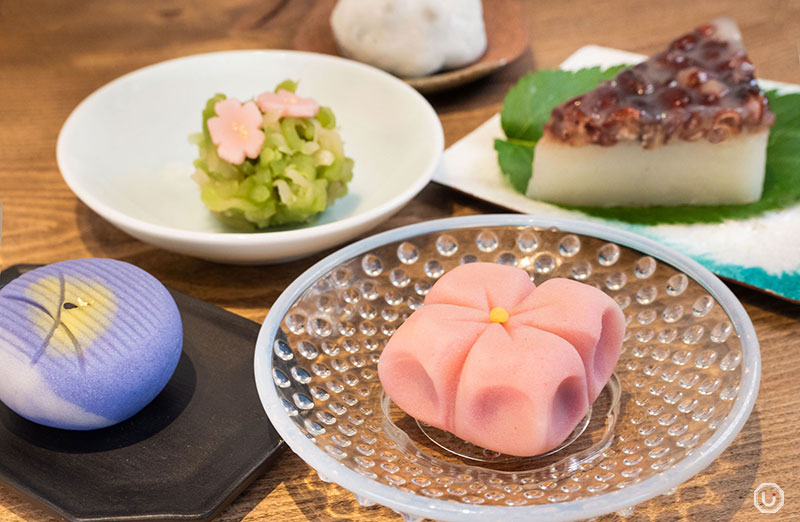
Bringing the beauty and spirit of wagashi into modern daily life is Mahorodou Sougetsu.
Wagashi artisan and owner Fumito Yamagishi trained for about 20 years at various wagashi shops before opening Mahorodou Sougetsu in Setagaya in 2015.
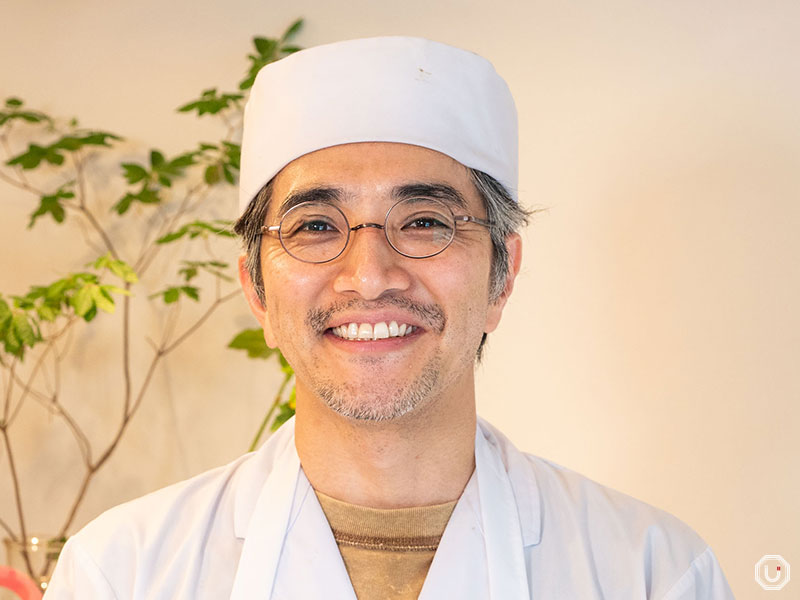
Fumito Yamagishi, wagashi artisan and owner of Mahorodou Sougetsu
The shop’s minimalist white aesthetic evokes a chic neighborhood cafe more than a conventional wagashi shop. Inside, there’s a cozy eat-in space where regulars from the neighborhood come to enjoy seasonal sweets with a cup of tea.
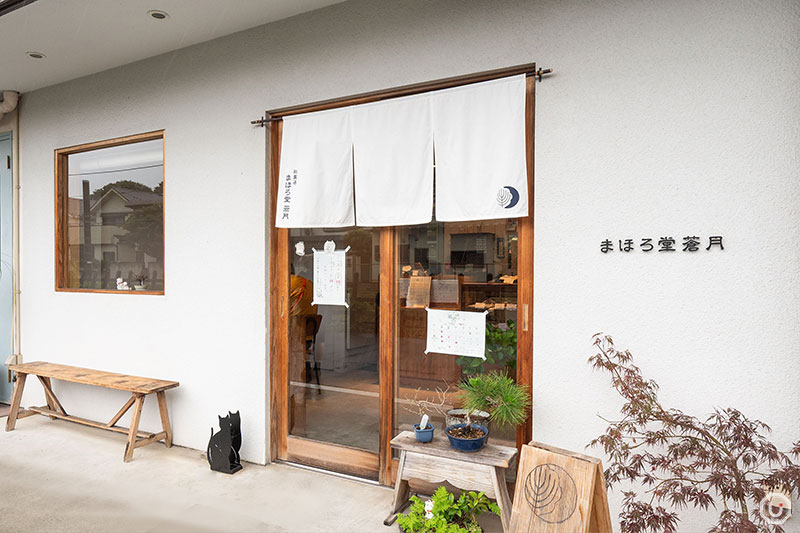
Exterior of Mahorodou Sougetsu
Mahorodou Sougetsu: where you can enjoy wagashi in a modern cafe
While some wagashi reflect the changing seasons, others are beloved year-round for their consistent, familiar taste.
At Mahorodou Sougetsu, those staples are the “Maneki Neko Dora” (lucky cat dorayaki) and “Aomame Daifuku” (green soybean daifuku, sweet Japanese rice cakes).
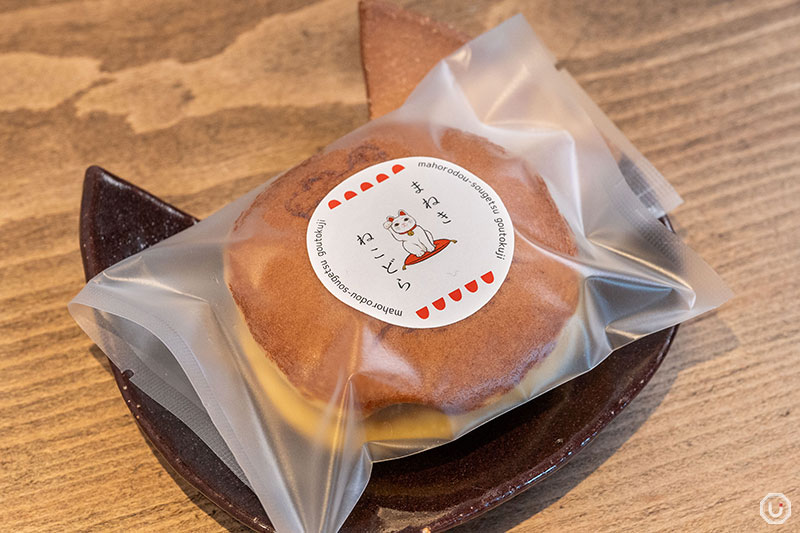
“Maneki Neko Dora” — Eat-in: 248 JPY (tax included) / Takeout: 253 JPY (tax included)
Dorayaki—made by sandwiching sweet red bean paste between soft cakes—is classified as a type of wagashi known as asa-namagashi or chū-namagashi (fresh or semi-fresh confections). Wagashi are divided into many categories, based on ingredients, preparation methods, and other factors, though the distinctions can often be blurred.
This ambiguity is part of what makes wagashi so profound, reflecting its long and rich cultural history.
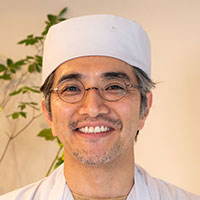
Sweets meant to be eaten the same day are considered asa-namagashi. Those with a longer shelf life fall under chū-namagashi. Today, with oxygen absorbers available, whether dorayaki is categorized as asa-namagashi or chū-namagashi can vary by shop or artisan.
At Mahorodou Sougetsu, the bean paste is made fresh every day by Yamagishi himself, resulting in a moist, smooth texture and subtle sweetness that highlights the natural flavor of the ingredients. The fluffy, tender pancakes complement the filling perfectly.
The soft, fluffy cake is also a delight. Its compact size fits perfectly in the palm of your hand, making it an ideal gift to take home.
A beckoning cat emblem—modeled after the famous maneki neko statues of nearby Gōtokuji Temple—is branded onto the top, giving it a charming appearance and local flair. The compact size also makes it a popular souvenir.
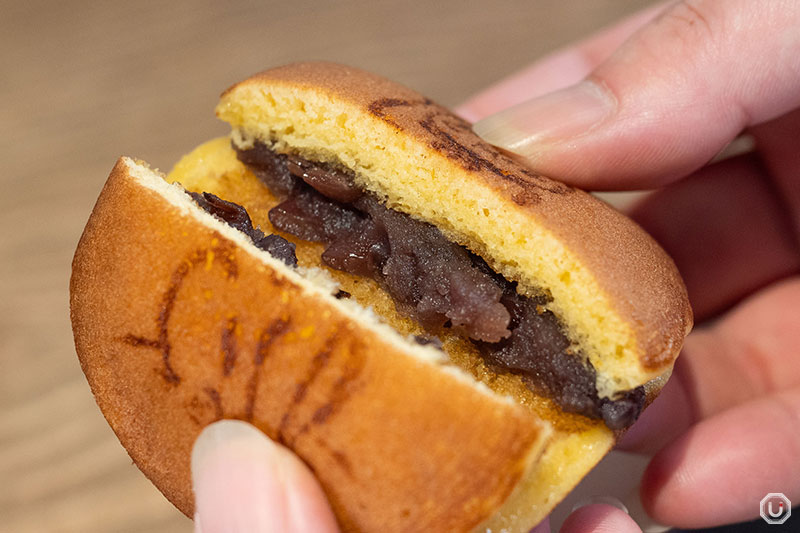
Maneki Neko Dora
The Aomame Daifuku is a refined sweet that balances mildly sweet anko (red bean paste) with lightly salted green peas, all wrapped in pillowy mochi. The peas are carefully simmered to retain just the right amount of texture, creating a pleasant contrast with the tender mochi for a perfectly balanced bite.
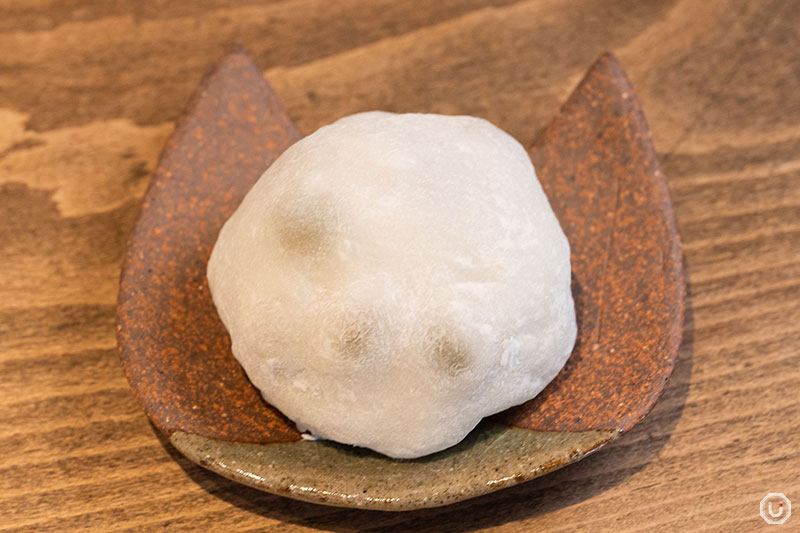
“Aomame Daifuku” — Eat-in: 242 JPY (tax included) / Takeout: 237 JPY (tax included)
The mellow sweetness of the red bean paste and the savory hint of the peas are perfectly balanced, making it irresistibly moreish.
While it’s a popular gift item, enjoying it in-store with a cup of freshly brewed tea lets you fully appreciate the delicate layers of flavor.
Wagashi that reflect Japan’s distinct seasons
One of the key charms of wagashi is its delicate ability to capture the essence of a season in a single bite-sized piece.
At Mahorodou Sougetsu, you’ll find beautiful jōnamagashi (premium fresh wagashi) that reflect the seasonal atmosphere each time you visit.
In summer, limited-edition creations like “Yoihotaru” (Evening Firefly), “Nadeshiko” (Fringed Pink), “Yohira” (Hydrangea), and “Minazuki” (June) are featured—each one evoking the subtle shift from Japan’s rainy season to early summer.
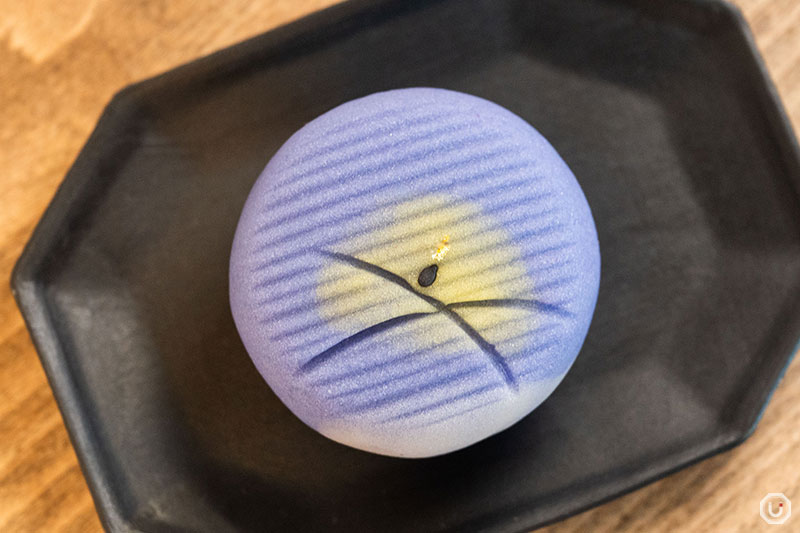
“Yoihotaru” — Eat-in: 352 JPY (tax included) / Takeout: 345 JPY (tax included)
Yoihotaru, which evokes the soft glow and fleeting path of fireflies at dusk; Nadeshiko, modeled after the delicate pink flowers that bloom during breaks in the rainy season; and Yohira, an archaic word for hydrangea—all are exquisite jonamagashi that delicately reflect the beauty of the season.
Jonamagashi are a refined category of wagashi often served at tea ceremonies, known for their intricate craftsmanship. At Mahorodou Sougetsu, each of these seasonal confections is made using the nerikiri method, a traditional technique for shaping and coloring sweet bean paste with artistic precision.

Nerikiri is made by adding a binding agent to white bean paste to make it easier to shape and mold. These are typically ingredients like yam or gyūhi (a type of soft mochi).
The true charm of wagashi lies not only in their taste, but in how they evoke the seasons through appearance and inspire the imagination through their form.
These three treats are all made using the nerikiri method, and each is filled with the same sweet bean paste. In other words, the flavor itself doesn’t vary significantly between them.
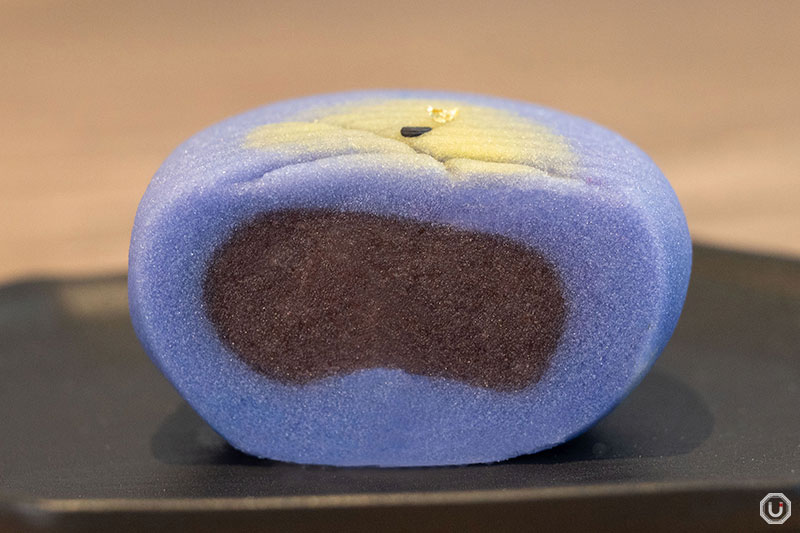
Yoihotaru, Nadeshiko, and Yohira have the same anko filling
However, the differences in shape and color create completely different impressions of the seasons and their moods.
Even with the same sweetness, each wagashi conveys a completely different seasonal scene. This ability to express landscapes and emotions beyond flavor is what makes wagashi so rich and meaningful.
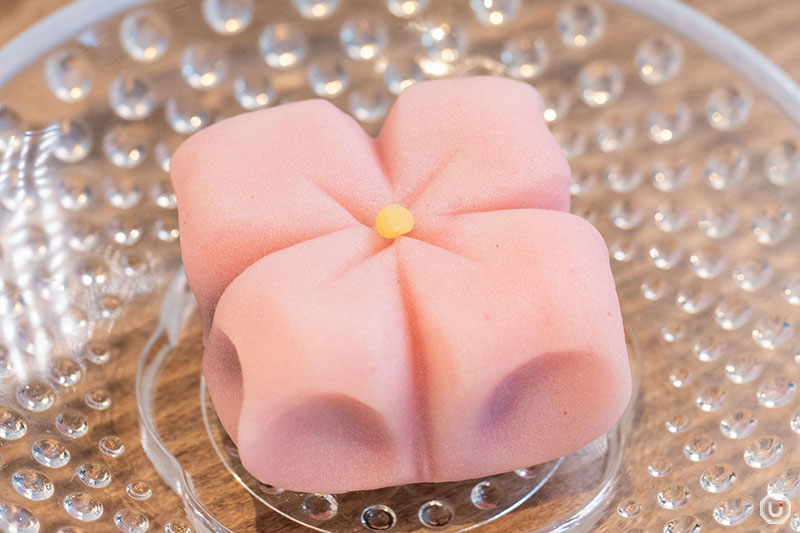
“Yohira” — Eat-in: 352 JPY (tax included) / Takeout: 345 JPY (tax included)
What’s even more fascinating is how a single base shape can carry entirely different meanings just by changing its color or texture. This is the expressive potential of nerikiri.
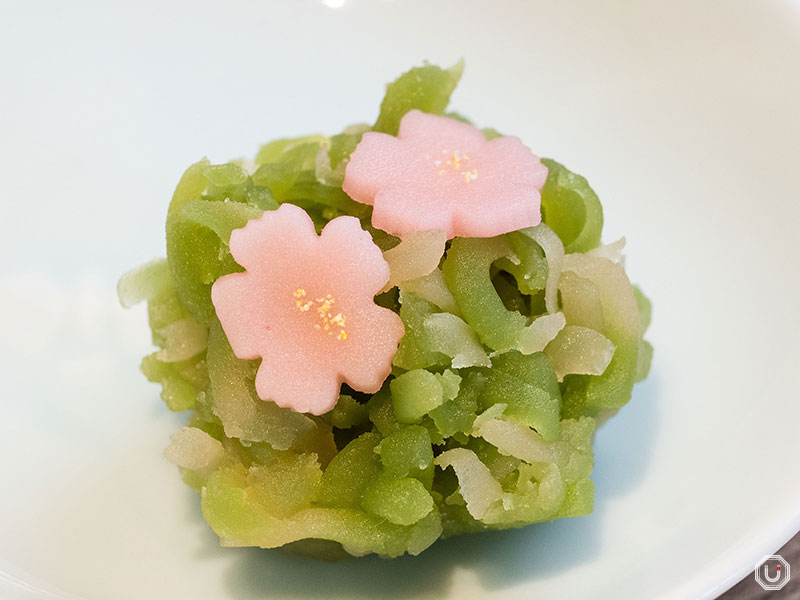
“Nadeshiko” — Eat-in: 352 JPY (tax included) / Takeout: 345 JPY (tax included)

There are design templates in wagashi. Our Nadeshiko, for instance, can become a completely different sweet—called “Manryō”—just by adjusting its color and decorations. It’s the same template, applied differently.
Mr. Yamagishi continues:

One famous example is the chakin-shibori method. You mash and strain boiled chestnuts, season them with sugar or mirin, and squeeze the paste in cloth to make kuri kinton (chestnut sweets). But with a slight color shift—white on top and light blue on the bottom—it can also become a representation of Mount Fuji.
The design of wagashi is marked by a creative flexibility that goes beyond realism. Even when starting from the same base design, the imagination of the artisan can transform it into an expression of a completely different season or scene.
With ingredients that allow for such shaping freedom, even a subtle change in color or detailing can give a single basic form an entirely different meaning.

Wagashi artisans will use whatever they can as tools. The end of a spoon or a fork—anything you see around you can be used to create detail. For example, you can cut agar jelly into the shape of a goldfish and float it in blue-tinted jelly to suggest swimming fish.
This ingenuity—finding creative potential in everyday items—demonstrates the high level of craftsmanship in wagashi, balancing tradition with innovation.
Wagashi: Japanese sweets and their symbolic meaning
In contrast to wagashi that reflect the changing seasons through their designs, Minazuki is a sweet imbued with tradition and prayers through its shape and ingredients.
Traditionally eaten on June 30—the halfway point of the year—Minazuki is believed to cleanse the misfortunes of the past six months and offer a wish for good health in the remaining half of the year.
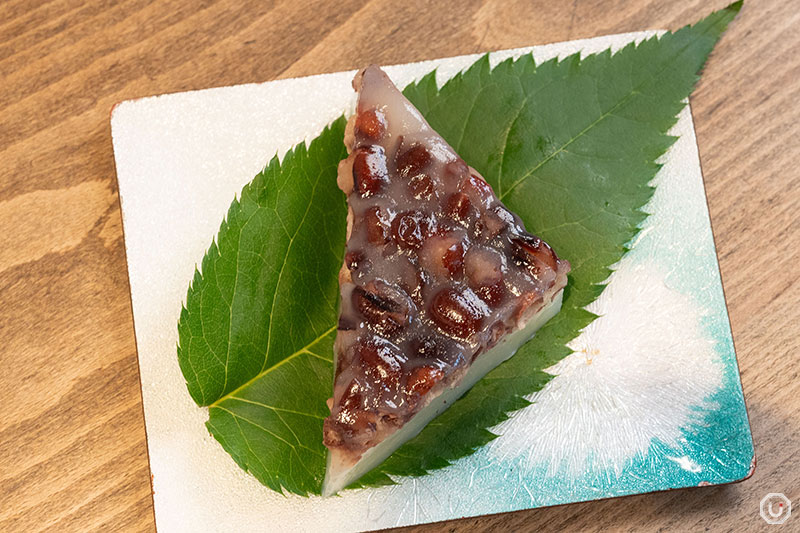
“Minazuki” — Eat-in: 286 JPY (tax included) / Takeout: 280 JPY(tax included)
Its distinctive triangular shape also carries meaning, symbolizing blocks of ice.

Ice was precious and a rare luxury in old times. So people expressed a sense of coolness symbolically through sweets like this.
On top of the Minazuki are azuki red beans, which carry another layer of meaning.
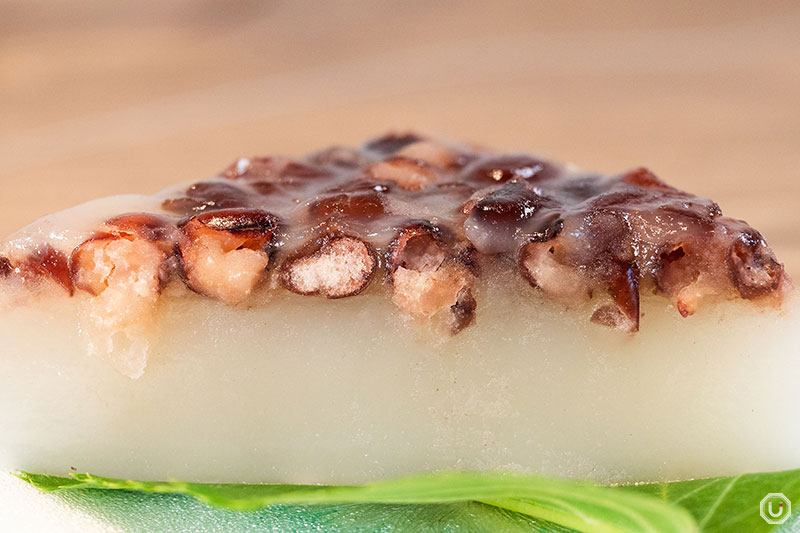

Azuki beans are red, right? In Japan, red has long been considered a color that wards off evil. That’s why azuki beans themselves have traditionally been treated as symbols of good luck.
Wagashi like Minazuki go beyond visual beauty—they’re also vessels of cultural beliefs and heartfelt wishes.
Tips for taking wagashi home as souvenirs
At Mahorodou Soguetsu, you’ll find a cozy space where you can slow down and savor a variety of wagashi right on the spot.
There are two small tables inside, each seating two, offering a simple and serene atmosphere where you can enjoy wagashi with a cup of freshly prepared matcha.
The seasonal premium sweets are as beautiful as works of art. First, delight in their aesthetic, then enjoy the gentle sweetness of the nerikiri, perfectly complemented by the subtle bitterness of matcha.
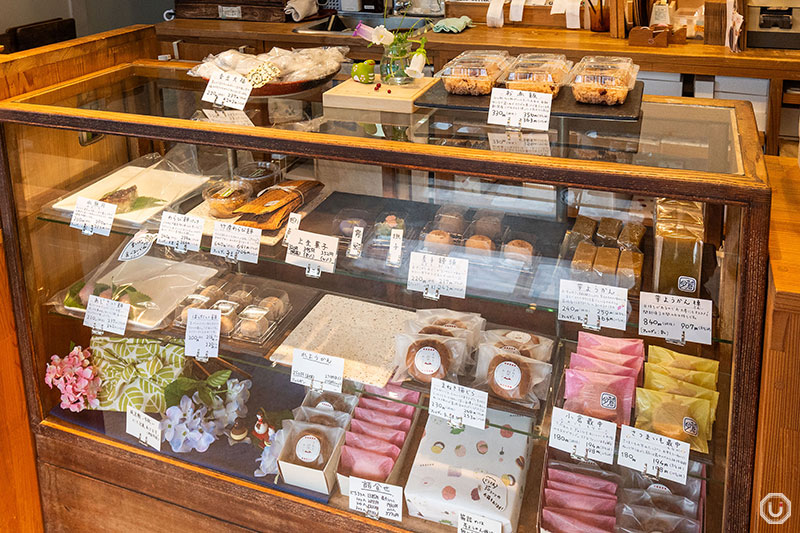
A wide variety of other wagashi are also available at Mahorodou Sougetsu.
While many visitors enjoy wagashi at the shop, others stop by to pick up gifts. However, jonamagashi are very delicate and don’t keep well—so they aren’t ideal for long-distance travel.
Instead, the “Maneki Neko Dora,” which stays fresh for about a week, is a great choice. Its soft pancakes and moist bean paste appeal to people of all ages.
The cat-shaped branding is inspired by the maneki neko (a beckoning cat figurine believed to bring good luck and fortune), so it’s sure to spark conversation!
Bringing home wagashi from your travels is like taking a piece of that place’s scenery and spirit with you. Each bite brings back memories of the local landscape—and that lingering aftertaste may be wagashi’s most charming quality of all.
Information
| Store name | まほろ堂 蒼月 Mahorodou Sougetsu |
|---|---|
| Address | 103 Windsor Palace, 1-38-19 Miyasaka, Setagaya-ku, Tokyo
|
| Access |
Miyanosaka Station 3-minute walk from Miyanosaka Station
Gotokuji Station 8-minute walk from Gotokuji Station |
| Phone number | 03-6320-4898 |
| Reservations | Accepted table-only reservations are not accepted |
| Payment |
|
| Hours | 10:00-18:00(last order 17:30) |
| Closed | Monday (or the following day if Monday is a national or substitute holiday) Unscheduled holidays |
| Seating | 6 table seats |
| Smoking | All seats are non-smoking |
| Official website | https://mahorodou-sougetsu.com/ |
| Other information |
|
※Menu contents, prices, store information, etc. are current as of July 2025.
